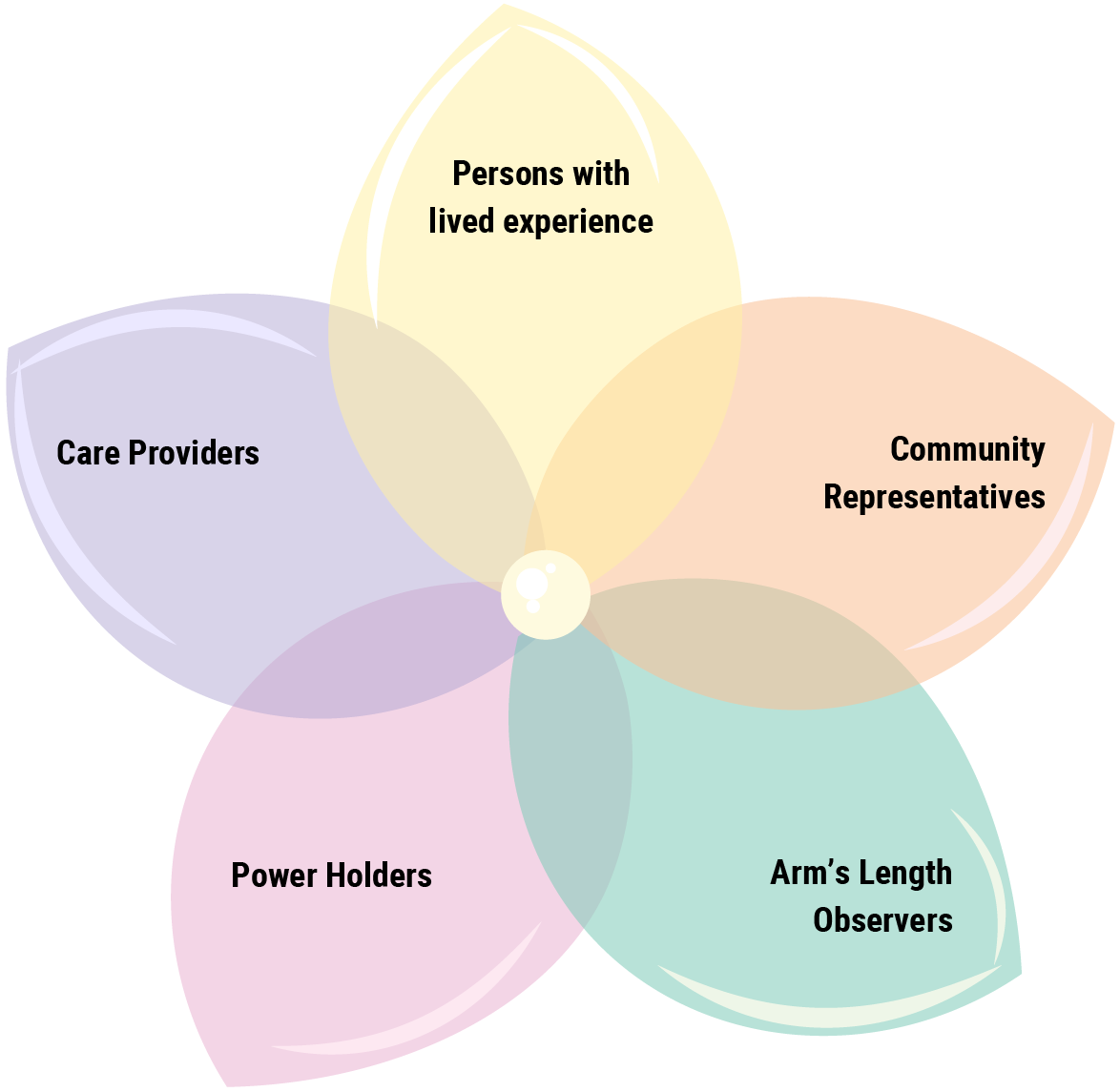5.4 Evaluating Your Suite of Evidence
In addition to evaluating each source individually, we also need to evaluate our entire suite of evidence to ensure that we aren’t missing or excluding any important voices when we draw our conclusions. The goal is to find a balance between many different voices.
There is no exact formula for how many of each voice or perspective you should be drawing on. The “correct” balance will look different across contexts and will depend on what your goal is for your research.
Step 1: Reflect
As with many of the strategies we’ve discussed so far, we need to start with some reflection. Your answers to these questions will help you to determine the balance of voices you might need.
- Why are you looking for this information?
- What power or responsibility do you have in relation to the topic?
- What perspective are you approaching this from?
- Who is the “audience” for your research?
- What do you already know?
Step 2: Positioning Our Sources
This section brings us to the final element of practicing knowledge justice introduced in this resource. Have we used a knowledge justice approach to learn about a topic or question? Do we have sufficient ‘evidence’ to make a decision? We can return to the Voices Flower to support our work here.
 Activity
Activity
Try to place each of your sources somewhere on the flower.
Many sources will likely fit on more than one petal, and some may be ambiguous. Recall that the Voices Flower does not capture Indigenous knowledges, so some of your sources will likely fall outside the flower. That is okay.
The purpose of positioning your sources using the Voices Flower is to reflect on whether you are approaching your new learning (or your evidence-based decision making) from multiple perspectives.
All activities can also be found in a downloadable workbook. Visit the ‘Using this Resource‘ page to access the workbook in MS Word and PDF formats.
Evidence-Based Decision Making in the Helping Professions
Within professional contexts, there is nuance to practicing knowledge justice. There are professional definitions for what ‘counts’ as evidence, or rules and regulations must be followed in professional settings. This will inform what a ‘good’ balance of voices will look like in the workforce. We may also feel pressured to evaluate sources quickly in order to meet deadlines.
In Chapter 6, we invite four members of the helping professions to share their thoughts on evidence-based decision making using a lens of knowledge justice. The video associated with this topic, Chapter 5 Video 6: Evaluating Our Collection of Evidence, highlights how complex and nuanced this practice is –be sure to check it out.
Step 3: Evaluate Your Collection of Knowledge
Assess whether there are any significant gaps on your flower. Have you included a range of voices? If you do have gaps, consider why using the following prompts:
- Were you limited on what evidence you were expected to use (e.g. assignment requirements or professional expectations)?
- Are you able to negotiate space to include more voices while still meeting these expectations?
- Did you think certain voices were not needed in your context? If so, is that still true?
- Was the language you used when searching complete and accurate? Do you need to revisit your search terms?
- Are certain voices inaccessible to you? Why? Are there alternatives that you could draw on?
Next, consider whether you need to find more voices or sources of knowledge. Use the questions below to guide your thinking. Does your evidence:
- Include multiple worldviews? (e.g. sources do not exclusively represent western/Eurocentric culture and epistemology)
- Include diverse and intersectional creators? Do you have authors/creators that represent a wide range of positionalities and experiences? (e.g. consider race, ethnicity, sexuality, gender identity and expression, language, age, income, ability, and other identities)
- Include a range of diverse knowledge sources? (e.g. story or narrative, land-based knowledge, creative expression, scholarly research, government information, public policy)
 Activity
Activity
Evaluate your suite of evidence in support of our case study.
- Have you included a range of voices? Are there any significant gaps on your flower?
- Have you reviewed knowledge sources that are inclusive of multiple worldviews? (e.g. sources do not exclusively represent western/Eurocentric culture and epistemology)
- Have you considered the perspectives of diverse and intersectional creators? Do you have authors/creators that represent a wide range of positionalities and experiences?
- Have you reviewed a range of knowledge sources? (e.g. story or narrative, land-based knowledge, creative expression, scholarly research, government information, public policy)
All activities can also be found in a downloadable workbook. Visit the ‘Using this Resource‘ page to access the workbook in MS Word and PDF formats.
Applying This to Our Case
In the video below, your authors look at the suite of evidence we’ve found for our case study and consider what next steps we might need to take.
Follow along with the list of evidence we collected, shared in Chapter 5.3 or in your Workbook.


